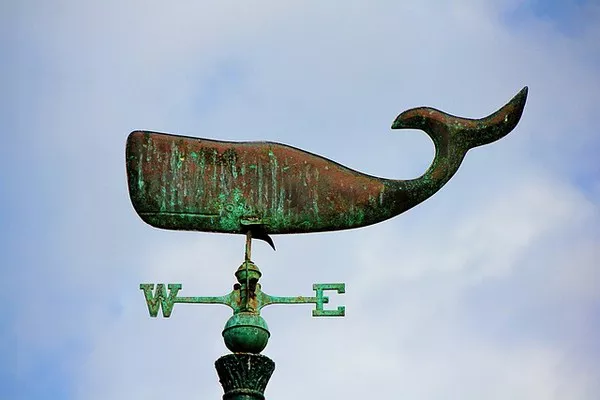Weather stations are invaluable tools for collecting meteorological data, crucial for various applications ranging from agricultural planning to scientific research. Mounting a weather station on a roof is a common practice that offers an unobstructed view of the sky, critical for accurate weather observations. However, the effectiveness of the data collected largely depends on the correct placement of the weather station. This article delves into the optimal strategies for mounting a weather station on a roof, ensuring accurate and reliable data collection.
Understanding the Components of a Weather Station
Before diving into mounting techniques, it’s essential to understand the components of a typical weather station:
- Thermometer: Measures temperature.
- Hygrometer: Measures humidity.
- Barometer: Measures atmospheric pressure.
- Anemometer: Measures wind speed.
- Wind Vane: Determines wind direction.
- Rain Gauge: Measures precipitation.
Each component has specific requirements for accurate measurement, which influences the optimal placement of the weather station.
Key Considerations for Roof Mounting
When deciding where to mount a weather station on a roof, several factors must be considered to ensure accurate data collection:
Avoid Obstructions: The station should be placed where it can capture unimpeded data. Objects like chimneys, antennas, and rooftop structures can obstruct wind flow, temperature measurements, and other data collection processes.
Ensure Proper Height: The height at which the station is mounted affects its accuracy. Sensors should ideally be placed at least 2 meters above the roof to avoid the heat and air turbulence caused by the building itself. This height helps simulate standard meteorological observation practices.
Consider Roof Material: Different roofing materials can affect temperature readings. For example, dark-colored or metal roofs can absorb and retain heat, which can skew temperature readings. To minimize this effect, ensure the weather station is mounted away from heat-absorbing materials or use shielding to mitigate these influences.
Mounting Location: Choose a location that provides a clear and direct path to the sky for accurate readings. For wind measurements, ensure that the anemometer and wind vane are placed away from any potential wind obstructions.
Protection from Environmental Elements: Weather stations should be protected from extreme weather conditions, including high winds, heavy snow, and excessive rain. Use durable materials for mounting and consider weatherproof enclosures for sensitive components.
Best Practices for Mounting
Here are some best practices to follow when mounting a weather station on a roof:
Mounting Height: Place the weather station at least 2 meters above the roof surface. For more precise data, especially for wind measurements, mounting the station at a height of 3-5 meters above the roof is recommended. This helps in obtaining readings that are less influenced by the building’s thermal and wind effects.
Wind Speed and Direction Sensors: Mount the anemometer and wind vane at the highest possible point on the roof. Ensure that these sensors are located away from any obstructions such as chimneys or rooftop vents that might affect wind flow. The sensors should be installed on a mast or pole that extends beyond the rooftop structures.
Temperature and Humidity Sensors: To avoid heat interference from the roof, mount these sensors on a shaded platform. Use a radiation shield to protect temperature sensors from direct sunlight. The sensor should be placed in a well-ventilated area to ensure accurate humidity readings.
Rain Gauge Placement: The rain gauge should be placed on a level surface, away from obstructions such as roof edges or vents that might affect rainfall measurements. Ideally, it should be positioned at least 1 meter above the roof surface to avoid splashback and other distortions.
Accessibility for Maintenance: Ensure that the mounted weather station is easily accessible for routine maintenance and calibration. Install ladders or other access equipment safely and ensure that the station is securely mounted to withstand maintenance activities.
Addressing Potential Issues
Even with careful planning, some issues may arise when mounting a weather station on a roof. Here’s how to address common problems:
Temperature Variability: If temperature readings seem inconsistent, check for heat sources or reflective materials on the roof that might be affecting measurements. Installing a radiation shield can help mitigate this issue.
Wind Measurement Errors: If wind data appears inaccurate, ensure the anemometer and wind vane are free from obstructions and are properly calibrated. Regular maintenance can help prevent mechanical failures and ensure accurate readings.
Precipitation Measurement Issues: For rain gauges, ensure they are clean and free from debris. Verify that the gauge is level and properly calibrated to avoid errors in precipitation data.
See Also The History of the Anemometer
Conclusion
Mounting a weather station on a roof requires careful consideration of various factors to ensure accurate and reliable data collection. By addressing potential issues related to height, obstructions, and environmental conditions, you can optimize the placement of your weather station for precise meteorological measurements. Proper installation and maintenance will enhance the performance of your weather station and contribute valuable data for a wide range of applications.
In summary, the key to an effective weather station setup is a combination of strategic placement, adherence to best practices, and ongoing maintenance. By following these guidelines, you can achieve high-quality weather data that will support your meteorological needs.

